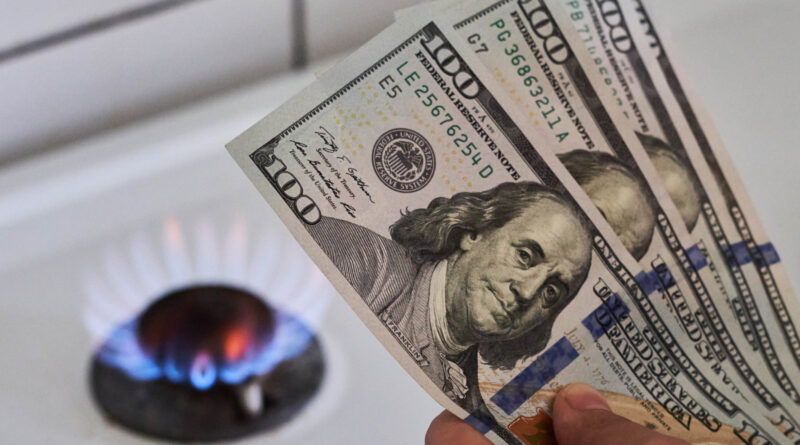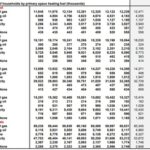How to save on winter home heating costs – Yale Climate Connections
Energy Disrupter

Winter’s snow and cold temperatures often arrive alongside skyrocketing energy bills. Whether you rent or own your home, there are many ways to save money this winter — from increasing energy efficiency to applying for financial assistance.
In addition, clean energy tax credits to help you weatherize your home, purchase more efficient appliances, buy a heat pump water heater, and more go into effect in 2023.
How to reduce heating bills with energy efficiency
Energy efficiency can help keep homes warm while decreasing energy use, reducing bills and pollution.
To increase a home’s energy efficiency, start by looking for leaks. “Just feel,” said Ryan Meres, programs director at the Residential Energy Services Network, a nonprofit that helps set standards for energy efficiency. “Especially when it’s very cold out, you can feel where air is coming through.”
Places where homes commonly lose heat are windows, doors, and anything else that opens to the outside, like plumbing pipes and vents. These leaks can be a major problem in older homes, particularly those built before 2009.
Homeowners can seal these external openings and increase insulation throughout their homes. For renters, it may be more difficult to make improvements, but widely available kits will enable you to temporarily seal windows by placing a plastic film around them. You can also verify that windows are properly closed and locked and check weatherstripping around doors. Rolling up a towel and putting it along the interior base of doors to the outdoors can also stop some leakage.
Read: Tips: How to weatherize your home
In addition, turn down the thermostat when asleep or away from home, said Carmen Carruthers, an outreach director for the Citizens Utility Board of Minnesota. Keep thermostats at 68 degrees Fahrenheit when at home and then reduce them by as much as 10 degrees when asleep or away. But in cold areas, avoid setting thermostats below 55, because colder temperatures can lead to pipes freezing, Carruthers said.
She added that some people might find 68 degrees feels too chilly, especially if they live in a drafty home. “We encourage them to adjust it a degree or two at a time and kind of find that sweet spot where they’re comfortable but not using more energy than they need to.”
Avoid space heaters, as they are a very cost-inefficient way to heat a home. “Those are really deceiving,” Meres said.
Assistance paying for energy bills
If you’re worried about affording heating bills this winter, a first stop is the federal Low Income Home Energy Assistance Program, or LIHEAP.
In some states, citizens’ utility boards can help people to navigate the process and make recommendations if a family doesn’t qualify for federal aid. Find out if there is one in your state by searching online for “Citizens Utility Board” and the name of your state. You can also reach out to your state’s LIHEAP office for other resource recommendations.
Carruthers recommended checking in with your utility providers to see what services they offer to reduce expenses. Ratepayers help pay for those programs, she said. “As a ratepayer, these programs are designed to be for you.”
Save on your electric bill with renewables
Another way to reduce expenses, if you heat your home with an electric system, is to make use of renewable sources like solar power. Federal and state tax credits are available for residential solar systems.
Read: Three common myths about solar energy, demystified
For those who are renters or otherwise unable to add solar panels to their residence, joining community solar projects can help. These programs allow you to pay into solar projects located nearby. In many cases, like when your utility’s electricity prices are high, this strategy can help reduce expenses.
Community solar projects can be found in over 39 states and Washington, D.C. The National Renewable Energy Laboratory has a list of community solar projects. Additionally, private companies can help customers in certain states to connect with renewable energy providers and save money on bills.
Switching home heat sources to renewable energy also helps fight climate change by reducing the amount of fossil fuels burned.
Longer-term solutions to reduce heating costs
Looking toward future winters, some bigger projects like replacing older water heaters can also save money on heating bills. Meres recommends hiring a local company to evaluate your home for energy efficiency improvements before making any big purchases or decisions.
As a result of the 2022 passage of the federal Inflation Reduction Act, new federal tax credits are available for clean energy appliances like heat pumps, electric stoves, and more.
Local utilities may also offer rebates for new energy-efficient appliances. “Where I am in New York, I replaced my old oil-fired water heater with a heat pump water heater about two years ago and got a $750 rebate from my electric utility, which covered about half the cost of the new unit,” Meres said.
For renters, tenant legal aid organizations like HOME Line in Minnesota are working to better understand and use legal codes that could be used to require landlords to make energy efficiency improvements. HOME Line is also part of a larger coalition that is pushing for legislation and public policies that would give low-income renters more control over their heating bills. When they spend less money on heating bills, people can invest those funds into other aspects of their life.
“Weatherization is being seen as sort of wealth-building,” said Michael Dahl, HOME Line public policy director. “It’s making sure that the tenants have control of more of their resources.”
In the meantime, it’s important that people reach out for help early when struggling with heating bills, as exposure to cold temperatures can be dangerous and even deadly.
“There is a lot of help out there right now, and I think it’s really important that people take advantage of it,” Carruthers said.
This article is an updated version of one originally published December 17, 2021.














